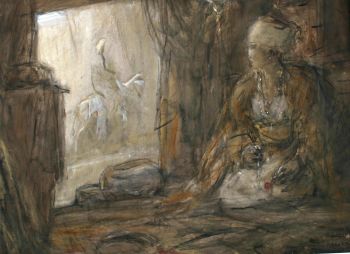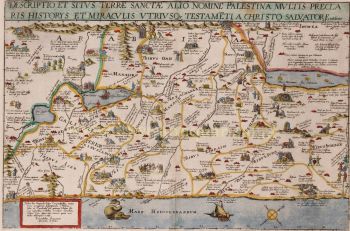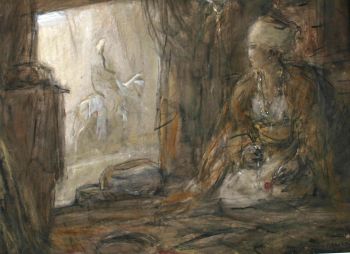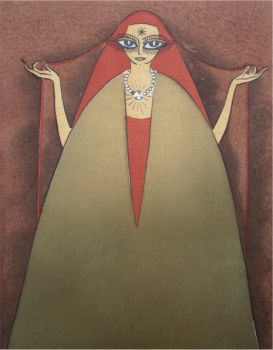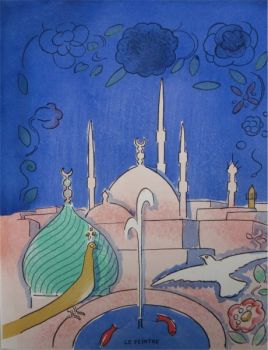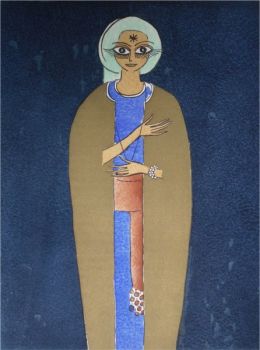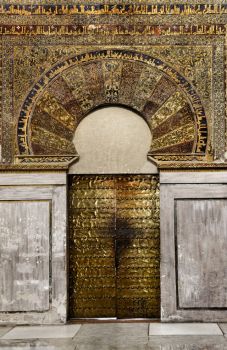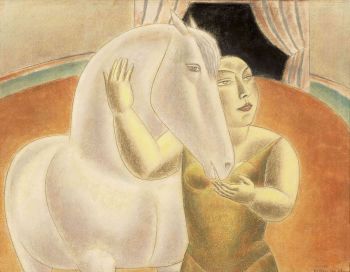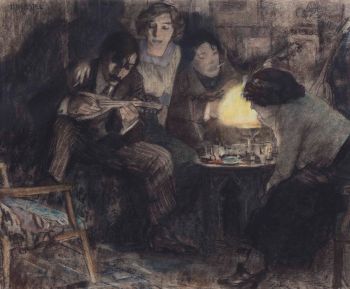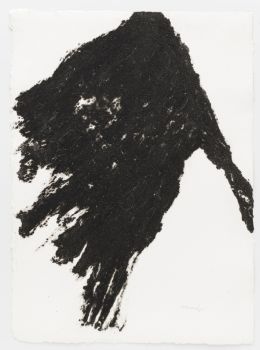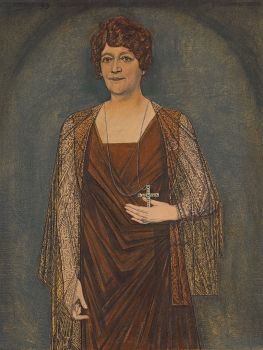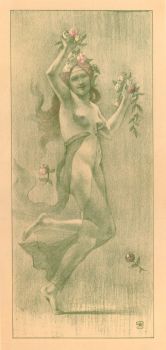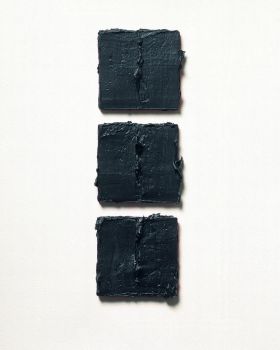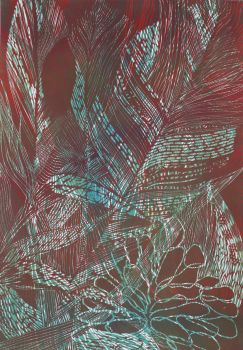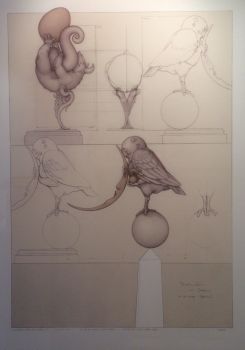1472 incunabula of an encyclopaedia of the world, containing references to Arabia, Syria, Palestine, 1472
Honorius Augustodunensis
PaperLeather
Currently unavailable via Gallerease
- About the artwork[Incipit:] … de ymagine mundi.
[Nuremberg, Anton Koberger, 1472(?)]. Folio (31 x 22 cm).Rubricated throughout and about half of the spaces left for initials filled in by hand in red ink. 19th-century red sheepskin.
First edition of Honorius Augustodunensis's (1080-1154) popular Imago mundi, an encyclopaedia of popular cosmology and geography combined with a chronicle of world history. He takes the river Nile as the boundary between Africa and Asia and calles the whole latter continent "India". This places Arabia, found in the subsection on Mesopotamia, under "India". Mesopotamia, found along the Tigris and the Euphrates, also includes the Kingdom of Sheba, home of the Queen of Sheba, and is inhabited by the Moabites, Syrians, Saracens and others. After Mesopotamia we find Syria, including Phoenicia, which is followed by sections on Palestine and Egypt
Augustodunensis's Imago mundi exemplified the picture of Africa and the Orient prevalent in the West ca. 1100 as lands full of marvels. It is one of the five earliest books printed by the great and prolific Nuremberg printer Anton Koberger.
With bookplate on pastedown and some early manuscript annotations in the margins. Lacking the second of the two last blank leaves. With a few wormholes, a couple leaves attached to stubs, but otherwise in very good condition. Binding slightly rubbed.
BMC II, p. 411; Goff H323; Hain 8800; ISTC IH00323000; not in Atabey; Blackmer. - About the artistHonorius Augustodunensis (1080-1154), commonly known as Honorius of Autun, was a very popular 12th-century Christian theologian who wrote prolifically on many subjects. He wrote in a non-scholastic manner, with a lively style, and his works were approachable for the lay community in general. He was, therefore, something of a popularizer of clerical learning.
Very little is known of his life. He says that he is Honorius Augustodunensis ecclesiae presbyter et scholasticus, but nothing else is known. "Augustodunensis" was taken to mean Autun, but that identification is now generally rejected. However, there is no solid reasoning for any other identification (such as Augst near Basle, Augsburg in Swabia, or Augustinensis, from St Augustine's Abbey at Canterbury), so his by-name has stuck. It is certain that he was a monk and that he travelled to England and was a student of Anselm's for some time. Toward the end of his life, he was in the Scots Monastery, Regensburg, Bavaria, probably living as a recluse.
Among Honorius's works are:
Elucidarium: a survey of Christian beliefs (written in England). It was translated frequently into vernacular.
Sigillum sanctae Mariae: a set of lessons for how to celebrate the Assumption, together with a commentary on The Song of Songs, which he sees as being principally about Mary.
Gemma animae: An allegorical view of the liturgy and its practices.
Opera exigetica: A commentary on The Song of Songs, (c. 1170) which sees it as pertaining to the marriage of Christ and the Church.
A long commentary on the Psalms.
Clavis physicae, the first part (1-315) is a summary of the first four books of Johannes Scotus Erigena Periphyseon (De divisione naturae), the second part (316-529) is a reproduction of the fifth book.
De luminaribus ecclesiae: a bibliography of Christian authors, which ends with a list of twenty-one of his own works.
His most important work was the Imago mundi, an encyclopedia of popular cosmology and geography combined with a chronicle of world history. It was translated into many different vernacular languages and was popular throughout the medieval period. It contained, among other things, a scheme for the operation of guardian angels.
A major scholar of Honorius is Valerie Flint, whose essays on him are collected in Ideas in the Medieval West: Texts and their Contexts (London, 1988).
See also her study of Honorius in Constant J. Mews and Valerie I. J. Flint, Peter Abelard; Honorius of Regensburg (Aldershot, 1995).
Artwork details
Category
Subject
Material & Technique
Related artworks
Antonie Derkinderen
Memory book Exhibition of Dutch Painting1892
Price on requestKunsthandel Pygmalion
Tilmanus Nicolaus Maastricht
Missale Romanum with Dutch silver mounts1788 - 1792
Price on requestJacob J. Roosjen SRI
Engelbert Kaempfer
ENGELBERT KAEMPFER BOOK1651 - 1716
Price on requestZebregs & Röell - Fine Art - Antiques
Tilmanus Nicolaus Maastricht
Missale Romanum with Dutch silver mounts1788 - 1792
Price on requestJacob J. Roosjen SRI
Hermann Nitsch
"UNDER MY SKIN" Signed book incl. small artwork and DVD in a matching box2010 - 2014
Price on requestGallerease Selected
Yoko Ono
YOKO ONO: "ARISING" SIGNED BOOK PLUS SMALL ARTWORK 2010 - 2014
Price on requestGallerease Selected
Engelbert Kaempfer
ENGELBERT KAEMPFER BOOK1651 - 1716
Price on requestZebregs & Röell - Fine Art - Antiques
LAWRENCE WEINER
"SKIMMING THE WATER [MENAGE A QUATRE]" Signed book plus small artwork2010 - 2014
Price on requestGallerease Selected
1 - 4 / 22Elisabeth Treskow
Afghan lapis lazuli inlaid with gold on a silver stand1950 - 1960
Price on requestJacob J. Roosjen SRI
Unknown artist
IMPORTANT AND RARE LARGE INDIAN 'COMPANY STYLE' PAINTING ON IVORY DEPICTING A PARADE1850 - 1900
Price on requestZebregs & Röell - Fine Art - Antiques
 Curated by
Curated byDanny Bree
Elisabeth Treskow
Afghan lapis lazuli inlaid with gold on a silver stand1950 - 1960
Price on requestJacob J. Roosjen SRI
1 - 4 / 24- 1 - 4 / 24

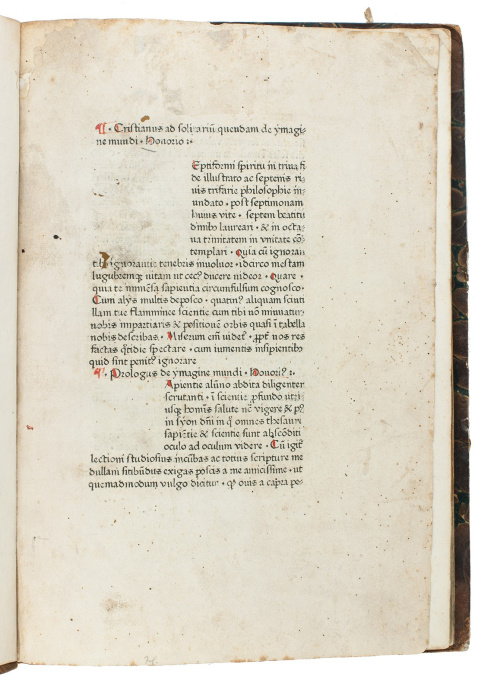
















!["SKIMMING THE WATER [MENAGE A QUATRE]" Signed book plus small artwork by LAWRENCE WEINER](https://media-2.gallerease.com/images/442bfd5f-fc31-4e18-a2fa-ee0c08eade64/350x350/skimming-the-water-menage-a-quatre-signed-book-plus-small-artwork.jpg)


